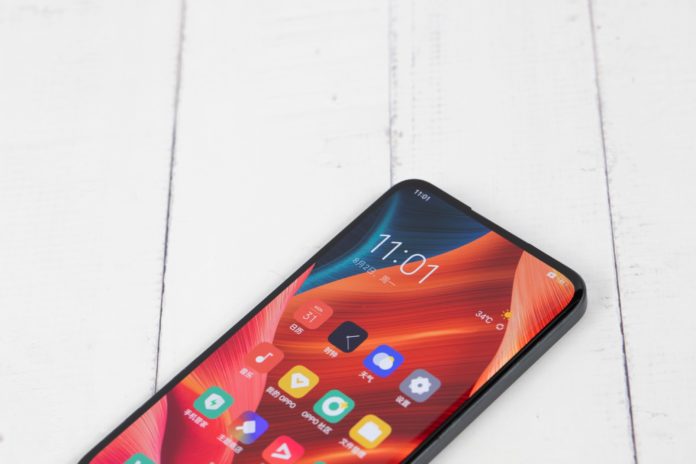OPPO has unveiled its next-generation prototype under-screen camera (USC) technology for smartphones.
It aims to offer the perfect balance between consistent screen quality and camera image quality, an under-screen camera solution with no compromises.
By combining hardware innovation and OPPO’s proprietary AI algorithms, the new under-screen camera solution claims to discreetly place the front-facing camera under the smartphone display in a way that maintains the integrity and consistency of the entire screen, both during use and while in standby.

This new under-screen camera solution claims to solve many technical and manufacturing-related challenges that have plagued under-screen camera technology since the beginning of its development eg:
- resolving issues such as inconsistent display quality in the screen area above the under-screen camera,
- poor image quality caused by obstruction of the camera by the screen, as well as
- issues with product reliability and lifespan.
On the display, OPPO’s next-generation under-screen camera solution introduces several new innovations in structure design and AI algorithms.
Improved control of screen accuracy, colour, and brightness: in contrast to the current industry standard of using 1 pixel circuit to drive 2 pixels (“1-to-2”) in the screen area above the camera, OPPO has introduced a new solution using proprietary screen technology, with each pixel circuit driving only 1 pixel (“1-to-1”).
When combined with OPPO’s precise algorithmic compensation technology, this allows the chromaticity and brightness of the entire screen to be precisely controlled with a deviation of about 2%. For uses such as reading e-books, browsing the news, or navigating with maps, OPPO’s next generation under-screen camera technology allows for the accurate display of smaller fonts and better preservation and representation of textural details and colours, resulting in a more consistent and immersive experience.
Improved reliability and lifespan: with the introduction of the “1-to-1” pixel circuit and dedicated optimisation algorithm, OPPO’s next-generation under-screen camera solution is able to provide display compensation in the under-screen camera area of screen, improving the screen’s lifespan by up to 50%.
![]()
Innovative pixel geometry: the new solution shrinks the size of each pixel without decreasing the number of pixels to ensure a 400-PPI high-quality display even in the camera area.
Transparent wiring and new design: OPPO has replaced the traditional screen wiring with an innovative transparent wiring material. Combined with a high-precision manufacturing process that reduces the width of the wiring by 50%, this results in much finer display quality with a smoother visual experience.
With regards to the camera, OPPO’s U.S. Research Institutes has developed a series of imaging AI algorithms – including diffraction reduction, HDR and AWB – to reduce some of the negative side effects typically found in under-screen cameras, such as blurry images and image glare. OPPO has also trained its AI diffraction reduction model using tens of thousands of images to control problems caused by diffraction at the light source.
All this is supposed to allow users to capture clearer, more natural-looking images.
Of course this isn’t available in a real product that you can buy yet.
Let’s see if OPPO will continue its research and development into hardware design and algorithmic processing capabilities to enable commercial use of its under-screen camera technology, with the end goal of bringing a more immersive, true full-screen under-screen camera system to users worldwide.




